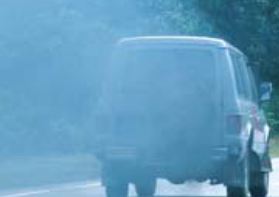Public Facilities - Worksheets
CBSE Worksheet 01
Ch-27 Public Facilities
Ch-27 Public Facilities
- Identify the figure below, which pollution is caused by this

- Soil
- Noise
- Air
- Water
- An individual who buys goods for personal use and not for resale is
- Owners
- Consumer
- Producer
- Investors
- Identify what is shown in the figure

- textile mill in Jaipur
- textile mill in Jamshedpur
- textile mill in Ahmadabad
- textile mill in Raipur
- Equity in the schooling facilities available to all children is an important aspect of
- Right to safety b. Right to life c. Right to education d. Right to school
- Mumbai's suburban railway is well-functioning public transport system. It is the densest route in the world, attending to ____ passengers daily
- 45 lakh
- 65 lakh
- 20 lakh
- 57 lakh
- Match the following:
Column A Column B (i) Polio (a) Public facilities (ii) Cholera (b) Sulabh (iii) Basic Needs (c) Water-borne disease (iv) Sanitation (d) Preventable disease - A shortage of municipal water is often taken as a sign of……………….of the government.
- In rural areas water is needed both for human use and for use by the………………
- The Constitution of India recognizes the Right to Water as being a part of the Right to………………under Article……………
- State true or false:
- 99% of Indian households have access to safe drinking water.
- Right to water, health and education are a part of the Right to Life.
- The situation of water crisis is worse in urban areas than rural areas.
- Public facilities relate to people’s basic needs.
- The important feature of a public facility is that once it is provided, its benefits can be shared by many people.(True/False)
- Clean water is essential in every household work.(True/False)
- Mention public facilities?
- Why do you think there are so few cases of private water supply in the world?
- Give a brief account of the public water supply in Porto Alegre, Brazil.
CBSE Worksheet 01
Ch-27 Public Facilities
Ch-27 Public Facilities
Answer
- Air, Explanation: The given picture shows the air pollution emitting from a car causing environmental damage.
- Consumer, Explanation: Consumer is a person who buys goods for personal use and not for resale
- textile mill in Ahmadabad, Explanation: The given picture is the textile mill in ahmedabad.
- Right to education, Explanation: The Indian Constitution guarantees the Right to Education for all children between the ages of 6-14 years. Equity in the schooling facilities available to all children is an important aspect of this Right.
- 65 lakh, Explanation: Mumbai’s suburban railway is well-functioning public transport system. It is the densest route in the world, attending to 65 lakh passengers daily.
- Polio - (d) Preventable disease
- Cholera - (c) Water-borne disease
- Basic Needs - (a) Public facilities
- Sanitation - (b) Sulabh
- failure
- cattle
- Life, 21
- False
- True
- False
- True
- True
- True
- Healthcare, sanitation, electricity, public transport, schools and colleges etc. are known as public facilities.
- Private companies work for a profit. Providing facilities like water supply is not a profitable business. Moreover, the capital needed to provide water supply to the entire population is very high few private companies will be able to bear. When the responsibility for water supply was handed over to private companies, there was a steep rise in the price of water, making it unaffordable for many people.
- Porto Alegre: It is a city in Brazil. What is remarkable is that despite having a large number of poor people, the city has a far lower number of infant deaths. The average price of water is kept low and the poor are charged half the basic rate. Whatever profit the department earns is used to improve the water supply in the city. The water department functions in a transparent manner; people have a direct say in deciding which projects should be taken up by the government. Through a process of public meetings, people hear what the managers have to say and also vote on their priorities.
